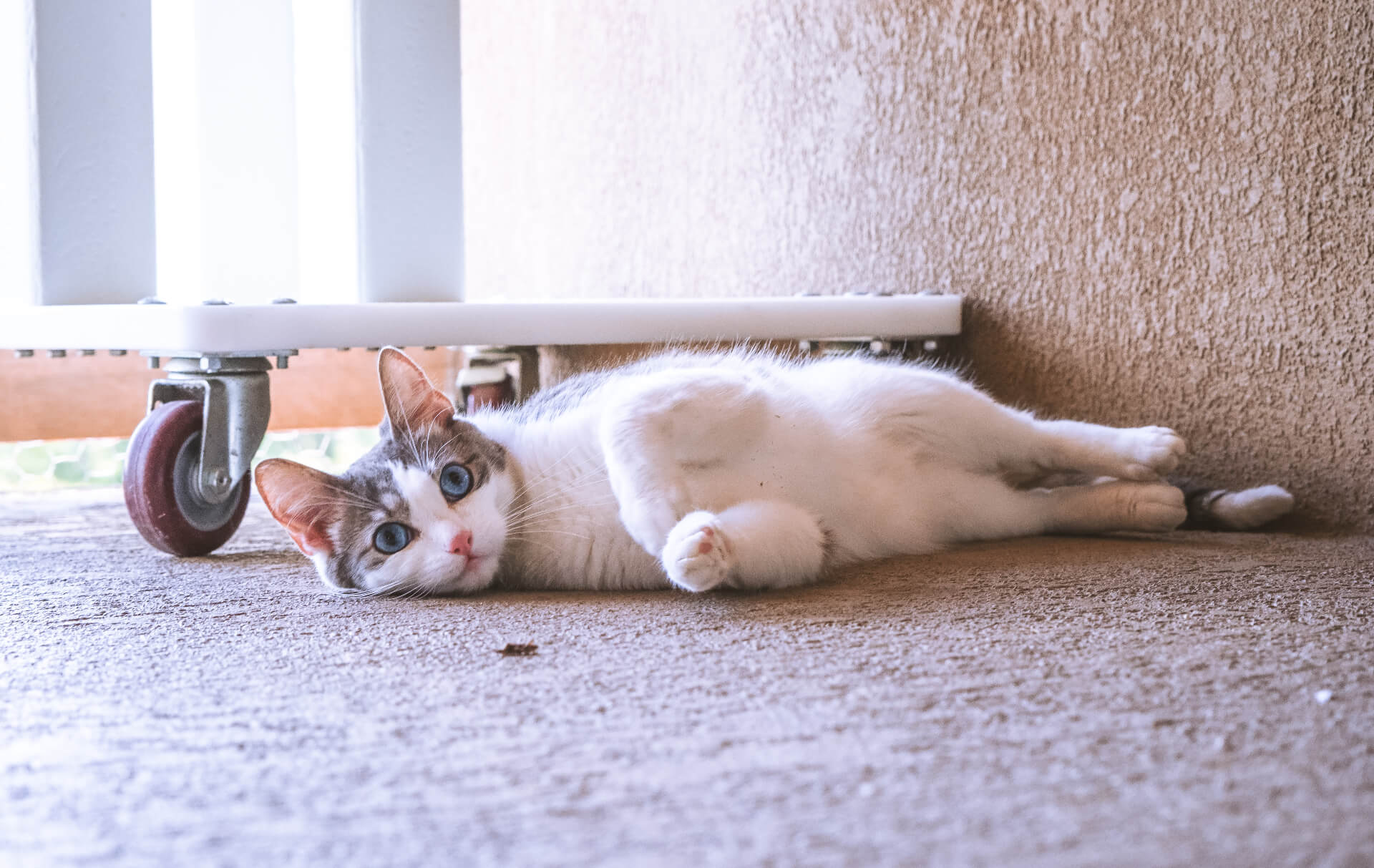
Reducing Marking Behavior
Urine marking is often not a housetraining issue. Dogs and cats are territorial animals and they “stake their claim” by marking a particular area or object with urine. Determining the cause of your pet’s inappropriate elimination is the first step to resolving it. It is important to consult your veterinarian if your dog or cat develops a sudden change in their housetraining or litter box habits to rule out a medical cause for the problem.
How to Determine if Your Pet is Urine Marking or House Soiling
- Intact pets – Intact animals of both sexes are more likely to urine-mark than spayed or neutered pets. Spayed or neutered cats and dogs are physically able to mark but often lack the motivation.
- Amount and location – Cats and dogs use a small amount of urine when marking and typically do it on vertical surfaces. Your pet may or may not lift their leg or assume the spraying position when marking.
- Targeting novel objects – If your pet urinates exclusively on new items in the house they may be marking. Items with an unfamiliar smell or another animal’s smell are often targets of urine-marking.
- Conflict between household pets – If there is rivalry between the members of your household, or a recent new addition, your cat or dog may be urine-marking to establish their territory. If there is instability in the household your cat or dog may also be marking out of anxiety.
- Contact with pets outside the home – Pets may feel the need to mark when another animal comes to visit or when they see a neighbor cat or dog through the window. A dog may mark in a new environment (like your in-laws house) when she has never marked at home before.
- Timing – If your dog or cat marks the same spot every time they come back inside they are likely urine-marking their territory. If they do it whether you are watching or not, it is likely urine marking. If, however, your pet seems to be completely emptying their bladder, is pooping, or only eliminates when left alone you may be dealing with a different problem such as incomplete housetraining, separation anxiety, incontinence or other medical issues.
What To Do
- Spay or neuter all pets – A spayed or neutered cat or dog will have less desire to mark and less conflict with other pets that can cause marking due to stress. When an animal is spayed or neutered it will take a few weeks to a few months for their hormone levels to reduce. It is normal for a dog to still mark the day after surgery because their hormone levels are still elevated.
- Resolve conflicts between household pets – Use positive reinforcement training to establish rules and structure. Provide exercise and a consistent routine to relieve stress. See our handouts on the subject or contact our free Behavior Helpline for more tips. Also consider the use of over-the-counter stress relief products.
- Discourage roaming animals – Cats and dogs may mark if they can see cats and dogs through the window. Discourage strays by removing any food or water sources or outdoor shelter that may be attracting them. Prevent your pets from being able to see roaming animals by blocking windows. Consider keeping your cat inside or giving her supervised outside time.
- Prevent access – Prevent access to the places or items your pet wants to mark. Use baby gates, ex-pens, closed doors or furniture to prevent your cat or dog from getting to an area they have marked before. Hang up guests’ coats or bags to prevent your pet from marking on novel objects. Consider isolating your cat or dog to a smaller part of the house to make it easier to observe their behavior and clean up any messes. For male dogs, consider the use of a “belly band” to prevent them from being able to mark while loose in the house.
- Interrupt the behavior – Supervise your cat or dog when they are loose in the house and interrupt them when they go to lift a leg or spray. Use a clap or other noise but avoid yelling. Lead your pet away from the area they wanted to spray using verbal cues or treats. Take your dog outide and reward him for peeing in the right place, and then return indoors. Engage your cat with a toy or treats/catnip to distract her from returning to urine-marking. Continue to supervise your cat or dog so that you can interrupt any marking behavior.
- Clean the soiled area – Use an enzyme-based cleaner designed for pet stains. These can be found at most local pet stores. Many brands will make a formula specific to marking. These formulas usually include scents to deter your pet from re-marking an area. Whatever products you choose ensure that it has enzymes in order to completely break down the organic material and neutralize the urine. Keep the product on hand so that you can clean up any marked area right away.
What To Avoid
- Punishment – Punishing your cat or dog for urine-marking will not resolve the behavior and is likely to increase stress. Many pets who are punished for marking continue to do it when the human isn’t watching. This makes the problem even harder to solve. After-the-fact punishment is completely ineffective because the animal does not have the ability to connect your response to something that happened in the past (even if it was only a few minutes ago).
- Anthropomorphizing the behavior – Cats and dogs do not urine-mark because they are mad at you or jealous. Their behavior may coincide with a change in the household (such as a new baby or new pet) but they are not urine-marking to spite you. The behavior may arise following a change at home because of stress or new things in the house. Animals are not capable of acting out of spite so do not take their urine-marking personally. Instead, identify the trigger and use the tips above.
